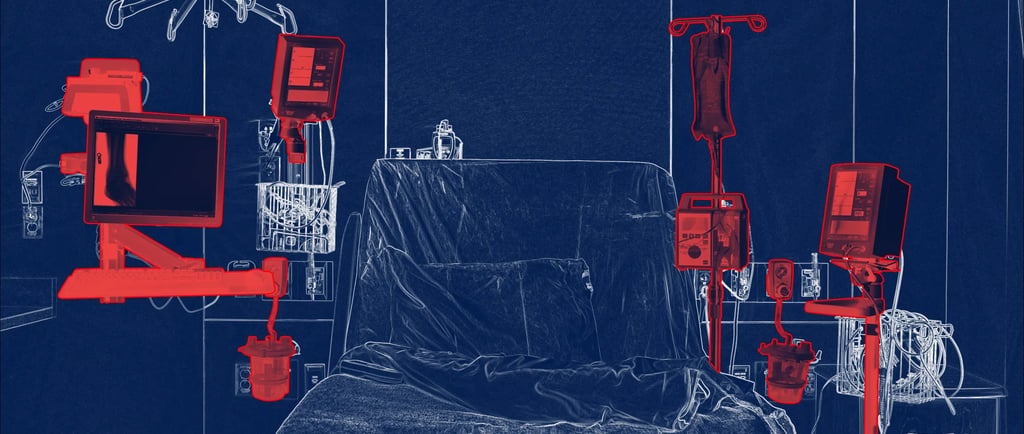
The Healthcare Sector Under Siege
A Growing Cybersecurity Crisis
Shane Brown
3/8/20252 min read


The Healthcare Sector Under Siege: A Growing Cybersecurity Crisis
Imagine being a patient at a major hospital, undergoing critical treatment, only to have your medical records locked behind an unbreakable digital wall. Doctors are unable to access your history, prescriptions are put on hold, and the hospital is forced to turn away new patients. This isn’t a dystopian scenario—it’s the reality for healthcare institutions increasingly targeted by cybercriminals.
The Threat: What’s Happening?
The healthcare sector has become one of the most lucrative targets for cybercriminals, posing serious risks to patient privacy, safety, and overall public health infrastructure. Recent reports indicate a significant surge in cyberattacks targeting health insurers, hospitals, and clinics, particularly in Australia and New Zealand. These attacks are not only becoming more frequent but also more sophisticated, with criminal organizations and state-backed actors—most notably from China—exploiting vulnerabilities to extract sensitive medical data for financial gain and espionage.
Who is Behind These Attacks?
Many of these cyberattacks stem from highly organized criminal groups and state-sponsored hackers. Recent reports highlight that hacking groups linked to China have specifically targeted healthcare institutions across Australia and New Zealand. These groups utilize advanced persistent threats (APTs), leveraging their resources to infiltrate networks, steal patient data, and, in some cases, shut down entire hospital systems.
One of the most alarming incidents involved a significant cyberattack on Genea, a major Australian IVF clinic. Hackers infiltrated its systems, exposing nearly 400GB of sensitive patient data, which was later published on the dark web. This breach not only compromised patient privacy but also caused disruptions in medical procedures, proving how devastating these attacks can be.
How Are These Attacks Happening?
Cybercriminals are employing multiple attack vectors to infiltrate healthcare networks. Some of the most common tactics include:
Ransomware Attacks – Hackers encrypt medical data and demand payment to restore access.
Phishing Scams – Fraudulent emails trick employees into revealing login credentials.
Exploiting System Vulnerabilities – Many healthcare institutions operate on outdated systems, making them easy targets for attackers.
Insider Threats – In some cases, employees with malicious intent or lax security practices inadvertently enable cybercriminals.
Adding complexity, the increasing use of artificial intelligence (AI) in healthcare brings both advantages and risks. While AI enhances healthcare delivery and administrative efficiency, it can also be exploited by cybercriminals to automate and scale cyberattacks, increasing the severity and scope of potential breaches.
The Impact: Why This Matters
A successful cyberattack on a healthcare facility can lead to:
Disrupted patient care, delaying critical treatments and surgeries.
Exposure of highly sensitive patient information, leading to identity theft.
Significant financial losses, costing millions in ransom payments, legal fees, and reputational damage.
What Can Be Done?
To combat these growing threats, healthcare organizations must take urgent action. Some key cybersecurity measures include:
Employee Training & Awareness: Staff should be educated on recognizing phishing attempts and securing sensitive data.
Stronger Network Security: Implementing firewalls, multi-factor authentication (MFA), and continuous monitoring can help prevent intrusions.
Regular System Updates: Patching outdated systems and upgrading cybersecurity software reduces vulnerabilities.
Incident Response Plans: Institutions should have a clear strategy for handling cyberattacks to minimize damage and restore operations swiftly.
Cybersecurity is no longer just an IT issue—it’s a patient safety issue. As cybercriminals continue to refine their tactics, healthcare organizations must remain vigilant, proactive, and prepared to defend against these persistent threats.
Sources:
Innovate
Building websites and securing your digital presence.
Connect
Support
Info@sinistergatedesigns.com
© Sinister Gate Designs, LLC 2025. All rights reserved.
